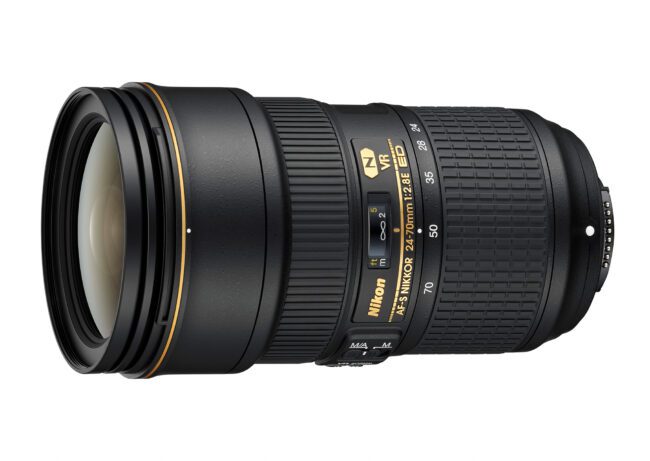It took Nikon nine years to finally release an update to its popular workhorse standard zoom lens in the form of the Nikon 24-70mm f/2.8E ED VR, which gained a few new features compared to its predecessor, including the much desired image stabilization. Nikon engineers have always put extra effort and emphasis on updated professional-grade lens designs, typically delivering outstanding performance. However, the release of the Nikon 24-70mm f/2.8E ED VR lens has been one of the most controversial in Nikon’s recent history, thanks to the negative attention it received from the photography community. Many reviewers criticized the lens heavily for its performance, claiming it to be a soft lens when compared to its predecessor, the Nikon 24-70mm f/2.8G. And some even put it as the winner in the “worst lens release of 2015” category. Did Nikon engineers really screw up in updating one of the most popular pro-grade lenses? That’s exactly what I wanted to find out when I started reviewing the 24-70mm f/2.8E VR lens.
Before I talk about the optical properties of the lens, let’s take a quick look at what the Nikon 24-70mm f/2.8E VR is all about.
1) Lens Overview
A 24-70mm f/2.8 zoom lens is considered to be a workhorse lens for many professional photographers, since it can be used for many different kinds of photography needs – from wide-angle landscapes and panoramas, to portraits and events. Thanks to its constant aperture of f/2.8, fast autofocus motor and state of the art optics, the Nikon 24-70mm f/2.8E VR is not only designed to focus quickly and accurately in low-light environments, but also made to yield exceptional sharpness, color and microcontrast in images. With a complex optical design involving a total of 20 elements in 16 groups, the optical design of the Nikon 24-70mm f/2.8E VR is quite a bit more complicated compared to its predecessor (which only has a total of 15 elements in 11 groups). One of the biggest changes in the optical formula is the introduction of Nikon’s first ever Aspherical ED (Extra-low Dispersion) lens element, which according to Nikon, is supposed to deliver highest optical precision and performance.
The “E” designation on the Nikon 24-70mm f/2.8E VR indicates electromagnetic diaphragm mechanism, which not only eliminates the aperture lever on the back of the lens, but also provides very precise control of the lens diaphragm. Nikon started switching its modern lens designs on pro-level and enthusiast-level lenses to electromagnetic diaphragm, so it was expected that Nikon would add it to the 24-70mm update. Similarly, Nikon added the latest coating technologies on the lens, including Nano and fluorine coating (both on the front and the rear elements) to repel and easily remove potential dirt and moisture.
In addition, Nikon added Vibration Reduction (VR) image stabilization technology to the lens, allowing for up to four stops of compensation when shooting hand-held. This was a big change to the lens and something many photographers, including myself, were waiting for, as image stabilization can be very useful when shooting in low-light conditions. The introduction of image stabilization, along with the above-mentioned optical changes obviously resulted in a noticeably larger and heavier lens. Compared to its predecessor, the Nikon 24-70mm f/2.8E VR grew from 83 x 133mm to 88 x 155mm in barrel size and gained a total of 170 grams. The lens filter thread also grew from 77mm to 82mm.
All of the above, combined with a high-quality build and full weather sealing came at a pretty large price increase – Nikon set the MSRP of the lens $ 500 higher than its predecessor’s initial MSRP, to a whopping $ 2,399.95.
2) Summary of Optical Performance
Before putting the lens through its paces in my lab environment, I decided to take a photography tour with the lens and see how it would perform in real life in the field. To my surprise, I did not see any optical problems with the lens – it performed admirably, showing amazing sharpness, colors and micro-contrast, something we are used to seeing from such high-end lenses. Based on my field observations I wrote my first impressions, praising the lens for its overall performance and versatility. And yet after I got home and tested the lens, I could not believe what I was seeing – the Nikon 24-70mm f/2.8E VR just could not resolve all the fine detail that was present when shooting in the field.
At first, I was a bit confused by this phenomenon, thinking that perhaps I somehow managed to damage my lens sample (although I never dropped and bumped the lens anywhere). So I requested a few more copies of the lens to see how they would do. Over a period of the next 6-9 months, I tested three more lens samples, all of which showed very similar results – the lens would do quite well in the field, but when shooting test targets at close distances, it showed pretty average, sometimes even abysmal results, particularly in the center of the frame. It became clear that Nikon certainly changed something in the lens and it turned out that it was done for a good reason. Basically, Nikon decided to address the weak corners (the biggest shortcoming of its predecessor) by changing the balance of sharpness across the frame. Instead of concentrating all the resolving power to the center of the lens as it was done on the 24-70mm f/2.8G, the new optical design was aimed at distributing that sharpness all the way to the extreme edges. This came with its own set of problems, as the center of the frame was no longer as stellar as it used to be. In addition, the balance of sharpness was also pushed towards infinity, giving less priority to subjects at very close distances – which is probably why many early reviews indicated poor sharpness numbers. You can see this clearly in the Optical Features page of this review, where I show numbers measured by Imatest, along with 100% crops from extreme corners, all shot at infinity focus.
What does this all mean? With the updated optical design and optimizations, Nikon essentially made the new 24-70mm f/2.8E VR a much more balanced lens in terms of sharpness. This can certainly upset some portrait photographers who are used to seeing maximum sharpness in the eyes of their subjects when shooting at close distances with a high-resolution camera, but at the same time, the even spread of sharpness certainly does make many landscape and architectural photographers happy, as we no longer have to worry about soft corners in our images.
The above is a short explanation of the reasons behind the aforementioned controversy surrounding the new Nikon 24-70mm f/2.8E VR. Let’s take a look at the lens in more detail and see what else has changed.
3) Lens Specifications
Main Features:
- Fast f/2.8 constant aperture with an electromagnetic diaphragm
- Sensational image quality and sharpness with virtually no distortion
- 4 stops of Vibration Reduction for handheld and low-light shooting
- Nonstick glass makes it easier to wipe off water, dirt and smudges
- Evolution of Nikon’s legendary 24-70mm workhorse
Technical Specifications:
- Mount Type: Nikon F-Bayonet
- Focal Length Range: 24-70mm
- Zoom Ratio: 2.9x
- Maximum Aperture: 2.8
- Minimum Aperture: 22
- Maximum Angle of View (DX-format): 61°
- Minimum Angle of View (DX-format): 22° 50′
- Maximum Angle of View (FX-format): 84°
- Minimum Angle of View (FX-format): 34° 20′
- Maximum Reproduction Ratio: 0.27x
- Lens (Elements): 20
- Lens (Groups): 16
- High Refractive Index Elements: 1
- Compatible Format(s): FX, DX, FX in DX Crop Mode, 35mm Film
- VR (Vibration Reduction) Image Stabilization: Yes
- Diaphragm Blades: 9
- Distance Information: Yes
- Nano Crystal Coat: Yes
- ED Glass (Elements): 2
- Fluorine Coat: Yes
- Aspherical (Elements): 3
- Super Integrated Coating: Yes
- Autofocus: Yes
- AF-S (Silent Wave Motor): Yes
- Internal Focusing: Yes
- Minimum Focus Distance: 1.2ft.(0.38m)
- Focus Mode: Manual, Manual/Auto
- E-type: Yes
- Filter Size: 82mm
- Accepts Filter Type: Screw-on
- Dimensions (Approx.): 3.4×6.0 in (Diameter x Length), 88.0×154.5mm (Diameter x Length)
- Weight (Approx.): 38.4 oz. (1070g)
- Supplied Accessories: LC-82 82m snap-on front lens cap, LF-4 rear lens cap, HB-74 Bayonet Hood, CL-M3 Semi-soft Case
Detailed specifications for the lens, along with MTF charts and other useful data can be found on the Nikon AF-S NIKKOR 24-70mm f/2.8E ED VR page of our lens database.
The post Nikon 24-70mm f/2.8E VR Review appeared first on Photography Life.











